The first writing here is my digital essay. In it, I discuss how comic books keep record of and impact western culture both in the past and today. I'm really proud of this one. I'm also hoping that the pictures add something to the essay. Enjoy!
What do you think of
when you hear somebody talk about comic books? Do you think of geeky guys in
some secluded storefront arguing about whether or not Superman is worthy of
picking up Thor’s Hammer or some such hypothetical situation?
 |
| Is this what you were thinking of? |
Do you think of
entertainment for little kids with no impact on the real world? Maybe you think
of summer blockbusters that gross billions, but are just more mindless
entertainment for summer moviegoers. I ask this because I’m fairly certain that
what’s furthest from your mind when you think of comic books is the culture of
the twentieth and twenty-first centuries. However, it is my firm belief that
since their invention, modern comic books have been reflective of their culture
and have impacted culture in their own ways. Stop laughing, I’m serious. Comic
books have left a tremendous impact on our culture. The best way to show this
is to look at the various eras of comic books and examine how the comics
reflect the events and attitudes of the time.
In their beginning, comics were anthologies. They didn’t
tell one cohesive story throughout the book, but rather separate stories all
published in one book. This was because comic books started out as compiled
reprints of newspaper comic strips. In these nascent comic books, there were
western stories, detective stories, horror stories, morality plays, and funny
animals. However, in 1938 a new type of character would show up in comics. That
character was the super hero. He was faster than a speeding bullet, more
powerful than a locomotive and able to leap tall buildings in a single bound.
His name was Superman and he was the first super hero.
 |
| Action Comics #1- The first appearance of Superman |
Superman’s first
appearances are an interesting look at culture in the late thirties for a few
reasons. The first is that he was the brain child of two Jewish immigrants,
Jerry Siegel and Joe Shuster. Superman’s origin is the immigrant’s story. His
homeland was in turmoil, so he was forced to leave it and go to a strange new
place. He had to leave behind the old name of Kal-El (which almost sounds
Semitic) and adopt the very American name of Clark Kent. The immigrant’s story
was something many Americans could relate to, but another reason why Superman
was so timely was his position as a power fantasy. In his first appearance,
Superman beats up a corrupt business man. This was the perfect fantasy for
everybody who had lost something in the depression. Superman stood for the
people. He fought for social justice. He was the ultimate escape from the
hardships of the Great Depression. He also ushered in the beginning of modern
comics, or, as it is better known, the Golden Age. However, another hero showed
up soon after Superman. His story was another that was all too relatable, but
he was something different entirely. He was Batman.
 |
| Batman in his early appearances |
Batman’s origin was yet
another story that people knew all too well. He was orphaned by a random and
desperate act of criminal violence. Batman offered a darker power fantasy than
Superman. He didn’t fight for any kind of social agenda; he just fought
criminals in all their many forms. He fought to protect young boys in dark
alleys. Both Batman and Superman proved to be wildly popular with readers, so
more super heroes began to pop up. National Comics (later DC) had Batman and
Superman. Timely Comics (Later Marvel) had The Sub-Mariner and The Human Torch.
Fawcett had Captain Marvel. The list goes on and on. Comic book super heroes
gave kids a way out of the dreary depression, but their focus was about to
change as a real-world evil grew in prominence. In Europe, Hitler was becoming
hard to ignore. Every other day it seemed like he took another country. War
broke out in Europe in 1939, but America wasn’t in it just yet. That is,
American troops weren’t in it yet. In the comics, heroes had already begun the
fight against the Nazis. According to comic book legend Stan Lee, “We (the
comic book industry) were fighting Hitler before our government was fighting
Hitler…We could all just see what a menace Hitler was…It wasn’t just what he
was doing to the Jews, it’s what he was doing to the whole world. He was
gobbling up countries.” (Comic Book Super Heroes Unmasked).
The Sub-Mariner, an anti-hero king of the
under-water nation of Atlantis who hated humanity, had begun waging a one-man
war on the Nazis and the Japanese. In a Superman story published in Look
magazine, Superman took the fight directly to both Hitler and Joseph Stalin.
Wonder Woman showed up at this time too and in her first appearance she fought
against the Nazis. Most notably however, was Captain America, who debuted in
1940. The cover of his first appearance depicted him punching Hitler in the
face.
 |
| This would be par for the course throughout the war |
The Nazis were the primary enemy that Captain America fought against.
Once America was in the war, the super heroes began to fight the Nazis with
full force. Comics were sent to the GIs while they were fighting in Europe and
the Pacific and they fell in love with the cartoonish depiction of the war and
the fact that the good guys always won. These World War Two stories are mostly infamous
for their very racist depiction of the Japanese and Germans. The Japanese
soldiers were depicted with yellow skin, buck teeth or even fangs. Racism in
these early comics was quite common. African Americans, Asians, and Native
Americans were all depicted in very racist ways. African Americans would be
drawn with large, puffy lips and their dialogue would often be reminiscent of
Uncle Remus.
 |
| Ummmmmmmm |
Asian characters would all have yellow skin, squinty eyes, thin
mustaches, buck teeth and round glasses. Native Americans were shown as being
unsophisticated savages. Even the very diverse comic book industry, which was
made up of largely Jewish, Italian and Irish immigrants, was not immune to the
racial attitudes of the time.
Eventually,
World War Two came to a conclusion and the Americans returned home victorious.
However, many GIs who loved comics during the war were tired of the violence.
They wanted humor books or romance books or western books. The violence had
been too real for them during the war. They didn’t want to see some ludicrously
powerful being solve all his problems with his fists. Comic books began to
change to reflect these tastes. Many super heroes faded into obscurity, but
things would only get worse as the Golden Age ended and the Silver Age began.
Post-war
America was a fearful place. They had just witnessed the might and power of the
atomic bomb. We also had a new enemy; Communism. The fear that Communists had
infiltrated our country kept many people up at night and was propagated by the
media and the government. Most notably in the government was Senator Joseph
McCarthy, who encouraged people to report suspected Communists. The news was
filled with stories about ousted Communists and potential Communism in
Hollywood. Another fear that plagued America was the fear of juvenile
delinquency. Kids were listening to rock and roll and rebelling and becoming
loose with their morals. There were plenty of boogiemen to place the blame on.
There was rock and roll, James Dean and even comic books. A psychiatrist named
Frederick Wertham went hard after comics in particular. He had performed what
turned out to be a very flawed study on juvenile inmates in prisons and
determined that they were there because they read comics and published a book
on the evils of comics entitled Seduction
of the Innocent.
 |
| This one book nearly destroyed comics |
This spawned massive parental outrage at comic books and
even congressional hearings on the depictions of violence, crime, sex, and
horror in comics. To avoid government censorship, the comic companies banded together
to form the Comics Code Authority. The Comics Code was a strict set of
guidelines that prevented comics from depicting graphic violence, horror, sex,
or any immoral activity.
 |
| This seal appeared on every approved issue |
It was a rigid code, but fear of censorship made
companies willing to adhere to it. As a result, comic books became little more
than children’s amusement when the Silver Age came around. At what was now DC
Comics, many characters vanished except for the core characters of Superman,
Batman and Wonder Woman who were all made over to be more in line with the
code. Out of fear of allegations that super heroes would be accused of
spreading Communism, the creators went out of their way to make Batman,
Superman and Wonder Woman outspoken American patriots. That’s how Superman’s
catch phrase went from “Superman fights a never-ending battle for truth and
justice,” to “…truth, justice and the American Way,” (Comic Book Super Heroes
Unmasked). That’s also how Batman became a fully deputized agent of the Gotham
City Police complete with his own badge (Comic book Super Heroes unmasked).
However, the public had lost interest in super heroes. Instead of the escapades
of super heroes, people read about the antics of Archie and Jughead or the
adventures of the cowboy Bat Lash or the romantic escapades in any number of
romance books that featured a rotating cast of characters.
By
the end of the fifties however, things began to look up for comics. Science
fiction had proven popular in books and in film, so it soon found its way into
comics. At DC, characters like The Flash, Green Lantern, Hawkman and The Atom
who had been casualties of poor post-war sales all received science fiction
make-overs.
 |
| These sci-fi updates would make up the Justice League |
As the fifties became the sixties, Marvel (formerly Timely) had its
own science fiction-themed heroes with The Incredible Hulk and The Fantastic
Four who were products of the atomic age and the space race respectively. These
characters also fell into another category at Marvel; they were real people
with real problems. The Hulk became a giant, rampaging green monster when he
got angry. The Fantastic Four were constantly quarreling and arguing. The Hulk
and The Thing, a member of the Fantastic Four, both saw themselves not as
heroes, but as monsters. Heroes had always been self-confident and powerful.
Marvel had changed that. Marvel also did something revolutionary when they
created the character of Spider-Man. He was not only a person with real
problems and issues, but he was a teenager. Marvel also explored issues such as
prejudice with The X-Men. In the sixties, Marvel emerged as the more mature,
more thought-provoking company that addressed real issues in the world. They
had their finger on the pulse of unrest and angst in the youth of the 60’s.
They even incorporated the counter-culture into their books. Doctor Strange and
Nick Fury: Agent of SHIELD both used psychedelic imagery and surrealism in
their art. In popular culture, psychedelic drugs were all the rage. The hippie
movement was in full swing and kids were listening to bands like Pink Floyd,
The Doors and Iron Butterfly. Additionally, Andy Warhol was one of the most
popular artists around. Steve Ditko and Jim Steranko, who worked on Doctor
Strange and Nick Fury respectively, understood these trends and incorporated
them into their art styles.
 |
| The surreal art of Jim Steranko |
DC, however, was still stuck in the rut of telling
silly stories for kids. This wouldn’t last forever though. Soon the sixties
ended and the seventies would usher in the Bronze Age.
In
the seventies, comics began to get their edge back. At DC, the young duo of
Denny O’Neil and Neal Adams had brought Batman back to his dark roots after the
campy days of Adam West’s TV series. They also brought social commentary into
comics with Green Lantern/Green Arrow. In Green Lantern/Green Arrow, the two
titular characters travel across the country and deal with issues of racism,
religious persecution, and most powerfully, drugs. In the story, Green Arrow’s
former sidekick ends up hooked on heroin and Green Arrow kicks him out.
 |
| The cover to Green Lantern #85 (the drug issue) |
Both DC
and Marvel took a hard look at the increasingly popular world of drugs with
Marvel publishing a Spider-Man story about Peter Parker’s friend Harry Osborn
overdosing on pills. Another issue that comics were addressing was race.
Beginning in the sixties and continuing strong into the seventies, African
Americans not only got more respect in comics, but also became heroes in their
own right. The Black Panther started the wave in the late sixties and was soon
joined by Luke Cage, Black Lightning, Blade, Mal Duncan and John Stewart. In an
issue of the always controversial Green Lantern/Green Arrow, an older African
American man confronts Green Lantern on how he’s always ready to help the green
skins, the orange skins, the purple skins, etc. (referring to the alien races
protected by Green Lantern), but that he’s neglected the “black skins” on his
home planet. In an interview, writer Denny O’Neil said that he did this because
“I knew that for my generation it was too late, but maybe we can get a real
smart twelve year old and get him thinking about racism,” (Comic Book Super
Heroes Unmasked).
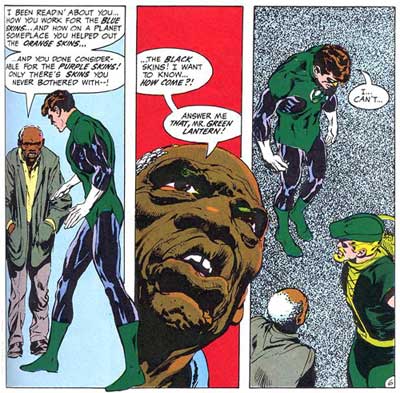 |
| This is one heavy panel. |
Comics once again had their finger on the pulse of society
when it came to race relations, which had become drastically different since
the forties. Not only were comics becoming more aware of social issues, but
characters were beginning to reflect the cynicism of the seventies. Both
Wolverine and The Punisher were very much products of their time as far as
their characters are concerned. They were angry, violent men of action who
killed enemies. Comics were getting darker, but it would take the eighties and
nineties to bring them fully into the dark modern age of comics.
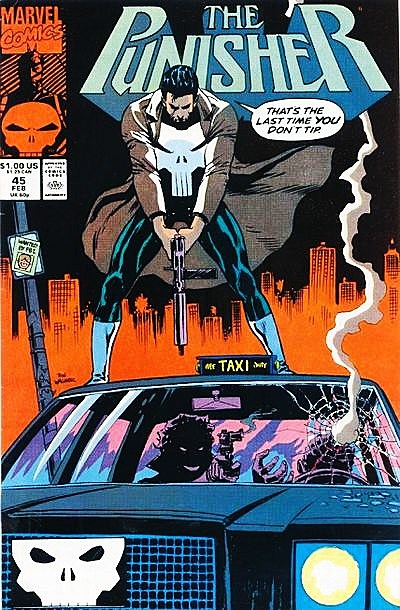 |
| The Punisher wages a one-man war on crime. |
Comics
in the eighties were very much about one man standing against a mass of evil.
To put it another way, they were a product of the Reagan era. Ronald Reagan
very much presented himself as a tough-as-nails world leader who would defy the
Soviet Union and comics took their cues from him. The Dark Knight Returns is a story about an aging Batman who fights
against a new gang that has overtaken Gotham as well as old enemies and even
old friends. He stands alone against insurmountable odds and doesn’t blink. At
this time, however, other countries began to release comics, most notably the
British reacting to the Thatcher era. Margaret Thatcher, the Prime Minister of
the UK, was extremely conservative, especially for a British politician. Many
in England were happy with her, but many weren’t as well. One of those who were
unhappy was writer Alan Moore.
 |
V's Guy Fawkes mask has become
a symbol of anarchy |
In the eighties, Moore released two comics that
critiqued both Thatcher and Reagan. These books were V for Vendetta and Watchmen.
V for Vendetta contrasted fascism,
the extreme of right wing politics, and anarchism, the extreme of left wing
politics, with one another while Watchmen
was a straight up critique of Reagan and Thatcher. The heroes of Watchmen are
highly flawed with some even being psychotic with the theme being that if you
place your faith in a flawed human being, eventually he will let you down.
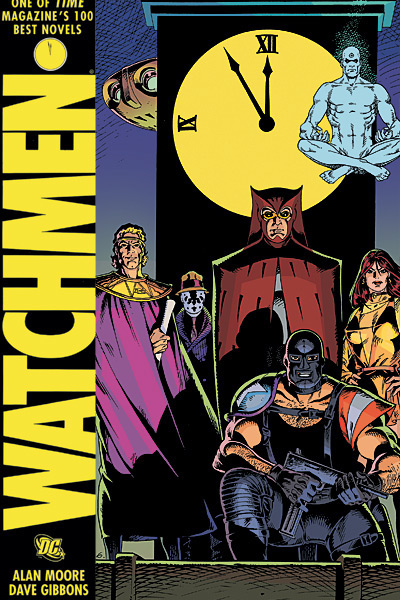 |
| One of the most important comics of all time. |
By
the nineties, pop culture had become all about flash and violence. The same
went for comics. Image comics, a company dedicated to publishing creator-owned
characters, put out several books that featured heavily muscled, gun-toting
lethal heroes who had more in common with The Terminator or Rambo than they did
with Superman.
 |
| And let's be honest, the art was horrible |
New topics like gun violence, gangs, homosexuality and AIDS were
now commonplace in comics as well. Gun violence and gangs were familiar
territory in many of Batman’s stories, while characters like Northstar in X-Men
and Apollo and Midnighter in The
Authority were homosexuals. Comics had come full circle and once again
proved that they could be topical and relevant for more than just children’s
entertainment. They had become intelligent pieces of art as well as mindless
entertainment. They had become a record of culture and even had an impact on
culture.
Now,
as you may have gathered, comic books are really good at capturing culture. How
have they effected culture though? Take a look around you. Open up the
internet. Go to your local movie theater. What do you see? Chances are, one or
more people might have on super hero shirts. Online you’ll probably see news
about a super hero comic book, video game or movie. At the theater you’ll see
poster after poster advertising the latest summer super hero adventure or a
movie inspired by a comic book like Kingsmen:
The Secret Service.
 |
The first Avengers film made over a billion dollars.
The second one is on track to do so as well. |
Today we see super heroes everywhere from movies to
video games to t-shirts. They have become a part of our cultural DNA. Go up to a
stranger and ask them who Superman is. They’ll know. I guarantee it. The comic
book is the Modern Greek myth. They aren’t just silly little stories. They’re a
cultural institution that everybody knows about. They inform us of our past and
can even have an impact on our future. Maybe now you won’t see this summer’s
big super hero blockbuster as more mindless fun. Maybe when you pass a comic
book store, you’ll look inside and see if you can find a book that speaks to
you. Maybe a book will grab you and inspire you to change things. That’s what
they have done for almost eighty years after all.
This is an infographic that I made for the topic. The theme of it is comic books and historical events.
And Here's part 2.

This next piece I did for a group project involving my inquiry topic as well as the topics of two other people from my class. There was a slight problem though; their topics had to do with Japan. I wasn't writing about manga, I was writing about comics, dammit! However, I had to work with my group, so I focused in on the most Japanese thing I could think of. Eventually, I came up with this piece on racism in World War Two comics.
 |
| Anybody offended yet? |
One of the things that
I’ve come to love about comic books in my study of them is that they are often
a perfect time capsule preserving a record of attitudes, outlook and culture in
the era they were written. Sometimes, however, comics can indicate attitudes
and outlooks that we should be ashamed of. Early comics were often incredibly
yet casually racist toward African Americans, Native Americans, and Asians. You
will find no better example of this than in American comic books published
during the Second World War.
Americans often look upon the German propaganda posters
with horror, but what they don’t realize is that if they picked up a comic book
from the World War Two era, they wouldn’t have to look much further than the
cover to see somewhat horrifying American propaganda. Now, I don’t want it to
sound like I’m directly comparing the two. They don’t directly correlate. For
one thing, the German propaganda was state-created. The comic books were not
subsidized by the government of the United States. All that you see in those
books was done by the comic industries own volition. The comic companies also
had noble intentions. Stan Lee himself said that they felt obligated to support
the war effort in whatever way they could (See: Comic Book Super Heroes Unmasked
produced by the History Channel). Stan Lee did also say that the comics
contained “So much pro-American propaganda that you almost thought they were
subsidized…”
 |
This was done voluntarily
by the comic companies. |
In these comics, The Americans were always the heroes while the
Japanese and Germans were portrayed as monsters. However, it was the Japanese
that got it the worst. The Japanese soldiers’ skin was always colored yellow.
They often had thin mustaches, round glasses and squinty eyes. They were also
drawn with buck teeth, fangs, or claws.
 |
"Oh, 1940's casual racism"
- Linkara |
Sometimes, they were just portrayed as
yellow-skinned anthropomorphic dragons. In the comics, they were always called
Japs or yellow or any number of derogatory terms. In one comic, Captain America
himself declares “I’ll get you for that, you yellow monkey!” as a Japanese
soldier hits him with the butt of his rifle.
 |
| Not cool, Cap. Not cool. |
To us, these images are shockingly
racist, but to people back in the 40’s, this was commonplace. After all, we
were at war with Japan and Segregation was still going strong. We had even
placed several Japanese Americans in internment camps. Racism against the
Japanese wasn’t anything new. Thankfully, though, super hero comics didn’t stay
racist. As the culture changed, so too did the comics.
These days, comic creators not only have respect for
other cultures, but are made up of many other cultures. There’s even an entire
Japanese comic book industry. The racism of those World War Two comics is
shocking and abhorrent, but as filmmaker Guillermo Del Toro once said about
similar racism in the stories of HP Lovecraft “It serves as a fossil record.”
Who knows what generations to come will be shocked and appalled by when they
take a look at comics published today?
I was really tickled about this next piece. The assignment was to write some kind of academic work related to our topic, so I decided to writer a philosophical/historical op-ed about X-Men and how it relates to discrimination. Yea, I kinda went for the low-hanging fruit, but I felt like I cranked out a good piece on the subject with a lot of historical parallels. I've added pictures for your enjoyment.
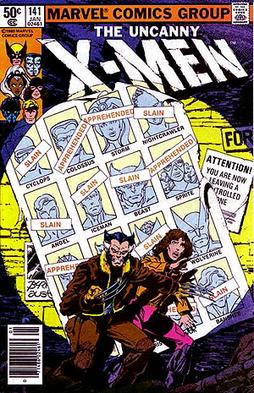 |
This image kind of evokes the feeling of
being hunted in somewhere like Nazi Germany. |
In the 1960’s, society
was changing. Feminism, civil rights, war protests, and distrust of the
government were daily growing in prominence. Ostracized groups were organizing
and demanding that their voices be heard.
In the wake of all of that, a comic
book company called Marvel was taking readers by storm. In contrast to DC
comics, their biggest competition, Marvel embraced flawed and imperfect heroes.
DC’s pantheon of heroes was made up of extremely powerful beings like Superman
and Wonder Woman or millionaires like Batman. They were adults who always had a
handle on the situation. Outside of their costumes, their lives were stable. In
contrast, Marvel’s Fantastic Four was a team of super heroes who often didn’t
get along. Spider-Man was a teenager dealing with the stress of work, school
and being a super hero as well as being an outcast. Chief among these imperfect
heroes though, were The X-Men. The X-Men were and to this day still are the
standard-bearers for the downtrodden.
Their stories, while varied and numerous,
often address the issues of discrimination. The X-Men are so much more than
just another team of young super heroes; they’re a voice for the outcasts.
Created
in 1963 by industry legends Stan Lee and Steve Ditko, The X-Men were mutants,
teenagers born with powers that often times brought more pain that pleasure to
their lives. They were students at the Xavier School for the Gifted where their
teacher, Professor Charles Xavier (Professor X), taught them to control their
powers and use them for the good of both human and mutant kind. There was just
one small problem. Mutants are seen as weirdos at best and extremely dangerous
at worst. The world’s reaction to the X-Men is a mixture of being grateful for
their heroic actions and classifying them as dangerous and unpredictable. Not
helping the public’s view of the X-Men is the Brotherhood of Mutants, an
organization led by a mutant called Magneto that views mutants as superior to
humans and seeks the conquest of the world.
 |
| The Brotherhood! |
One faction of the mutants seeks
peace and good for all mankind while another faction seeks war and reverse
discrimination. Does this sound familiar to you? That’s right; Professor X and
The X-Men are Martin Luther King Jr and his followers while Magneto and The
Brotherhood are Malcom X and the Black Panther Party. Think about it
historically. The Black Panthers rhetoric was inflammatory.
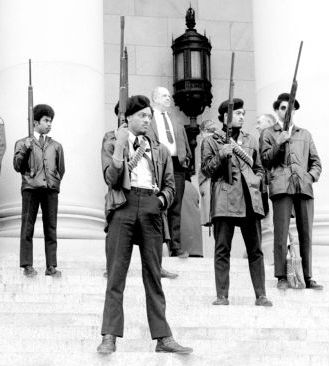 |
| A Black Panther Police Patrol |
They carried guns
on the streets of Oakland and said things like “Off the pigs!” In contrast, Dr.
King and his followers did peaceful demonstrations and talked about all people
living in harmony.
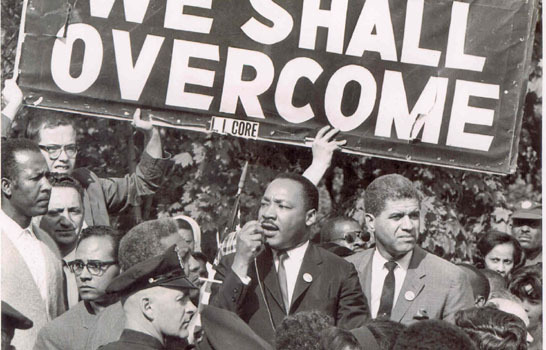 |
| Dr. King's peaceful demonstrations |
The Black Panthers were scary. They inspired fear and
mistrust among the white population while Dr. King is hailed as a hero and, upon
his untimely death, a martyr. Want more parallels? Aside from The Brotherhood,
The X-Men have fought with government-commissioned, mutant-hunting robots
called Sentinels and a paramilitary hate group called The Purifiers; basically,
government paranoia and, well, a hate group. Even getting away from physical
threats, The X-Men have to deal with the fact that they stand out. While many
of them can blend in with regular people, others can’t. Does that make them a
monster? Does it make them inferior to everybody else? It’s these real
struggles that The X-Men face that make them so popular both now and then.
Now,
this isn’t anything new. I’m definitely not the first person to draw these
parallels. Also, many writers take cues from the events that happen around them
at the time of writing. However, what’s interesting to me is the angle that
Stan Lee and every other writer take on these parallels. Namely, that peace and
coexistence is the right path to equality and that violent action leads to
either chaos or a different inequality. Again, you might be thinking that this
is very played out, but think about how revolutionary this is when it comes
from a medium that’s mainly made up of characters who take violent action.
Super heroes punch criminals in the face and leave them for the police to
collect or, in the case of the more extreme heroes, kill them.
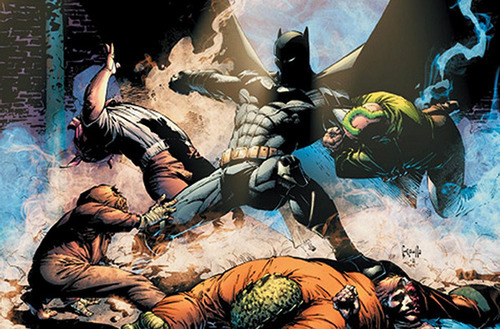 |
| The typical super hero solution. |
Now think about
what The X-Men, who are also super heroes, are saying. To boil it down to the
bare essence, the X-Men are saying that violence should not be your first
answer. Don’t misunderstand me, The X-Men use violence. They just use it to
defend themselves, humans or other mutants. However, the message of The X-Men
is that peace is the better option. Now to tie this back to discrimination and
prejudice, it would appear that what a person who feels ostracized should take
from The X-Men is that forcing your agenda or your ways on other people and
expecting them to be ok with it will only make things worse. Advocating change
and striving for it is good and commendable, but the second it becomes
forceful, then it will backfire.
 |
| In other words, don't be these people. |
The X-Men also shows us something that,
unfortunately, is universally true. Whether or not they’re the majority, the
extreme group will always be the loudest and most visible. In these stories,
the regular humans seem to think that The Brotherhood speaks for all
mutantkind. Just like how a lot of times we seem to think that The Westboro
Baptist Church speaks for all Christians or ISIS speaks for all Muslims. The extremists
will ruin it for everybody, but in the end, you just have to show the world
that the extremists don’t speak for everybody.
The
X-Men was and still is a very intelligent and accurate look at what it’s like
to battle discrimination. Some people will want peace, love and understanding
while some will want violent upheaval of the system.
 |
What's so funny 'bout
Peace, love and understanding, guys? |
When it comes down to it
though, violence doesn’t make anything better. In fact, in this situation, it
will make it worse. So if you’re feeling ostracized or oppressed, follow the
example of The X-Men. It may be a long struggle, but in the end you may find
that it was worth the waiting.
This is the last piece from my inquiry topic. It's another op-ed, but this time it's about how super heroes and comic books have endured so long in our culture of ever-changing trends.
While working on my
latest YouTube video about yet another comic book movie, a thought occurred to
me. Super heroes have been around for close to eighty years now, but they’re
more popular than ever. Why is that? Think about all the trends and fashions and
interests that have come and gone just over the past twenty, ten or even five
years. What makes super heroes so special that they can defy almost a century
of trends and still be popular, recognizable and iconic? I thought long and
hard about it and, with a little help from a quote from comic industry legend
Jim Steranko, I was able to come up with an answer. I was watching the
documentary mini-series Superheroes: A
Never-Ending Battle when, at the end of the show, Steranko closed with a
remark about how super heroes were able to survive all this time because of
their ability to adapt. After much thought, I’ve concluded that Jim Steranko is
absolutely right. Super heroes will always resonate with people, because they
can be whatever the people need them to be. Think about this, Superman went
from being a social crusader to the ultimate symbol of America to a bastion of
strength, courage and kindness in the face of complete and total darkness.
Superman is more than just an alien in blue tights who flies around punching
things. Superman is whatever we need him to be. Characters in comics have
expanded and changed to reflect the times. Roy Harper, Green Arrow’s sidekick,
became a drug addict, a single father, and even an amputee in his lengthy
history in comics. Not only did these things grow his character from a literary
standpoint, but they brought relevant and relatable issues to the pages of
comics. They humanized him. In the end, that’s what people want to see. They
want to relate to characters on some level, even if that character exists
outside the realms of possibility. Time passes in super hero comics too. Comics
aren’t still set in the 30’s or 40’s. They’re modern. They address modern
problems like the Iraq War, government surveillance, and gay rights as well as
the typical comic book problem of super villains wanting to do evil. In spite
of all the evidence of change and evolution in the world of comic books and
super heroes, there are still people who believe that they’re nothing more than
fun for children. These people balk at violence and mature subject matter in
comics simply because they have a backwards way of thinking. They aren’t able
to look past the tights and bright colors to see the subtext of the stories
being told. They can’t see an allegory for civil rights in X-Men because they
refuse to accept anything wrapped in the package of super heroes as
intelligent. For those people, there isn’t any arguing or convincing. They just
have another outdated way of thinking that will eventually either evolve and
see the hidden brilliance of comics or die out.
The
other way that super heroes have adapted is into other forms of media. Had
super heroes stayed just in comics all these years, we probably wouldn’t know
about them. However, super heroes have had their own cartoons, radio shows,
toys, t-shirts, TV shows, movies and most recently video games. These things
expand the audience that a character has and draws people back to their roots
in the comics. That’s how the industry has survived the multiple slumps it has
hit over the years. Think about how an ancient myth would spread. Myths would
be passed along orally. They would be told for entertainment in taverns and
from father to son. That’s what super hero stories have done but with a more
modern twist. To reach children, they become Saturday morning cartoons. To
reach gamers, they become video games. To reach your average everyday person,
they become big-budget blockbuster movies. The internet has helped them spread
even more since it combines all of the previously mentioned mediums into one.
Today,
you don’t have to go to a comic shop or a news stand to see super heroes. Turn
on your TV. Open up the internet. Go to your local cinema. Go to Wal-Mart even.
You’ll be inundated with super heroes because they’ve gotten into the cultural
bloodstream. Super hero stories have been able to adapt so that they’re always
relevant. It’s because of that that I, seventy-six years after his creation,
know who Batman is. It’s because of that that maybe when it’s been a hundred
years since his creation, people will still know who Batman is. Comic books and
the super heroes who populate them aren’t going away anytime soon. So long as
they keep changing with the times, there will always be a place for them.


























.png)



No comments:
Post a Comment